- Home
- Isaac Asimov
In the Beginning Page 10
In the Beginning Read online
Page 10
Suppose, though, we consider “civilized man.” The earliest civilization sufficiently advanced to include writing was the Sumerian. There, writing came into use as early, perhaps, as 3500 B.C. All other early civilizations developed writing after the Sumerians did, and that includes the Egyptians and the Chinese. The Sumerians were first in the field with mathematics and astronomy, too.
Therefore, if we think of the man God created not as the first man, but as the first civilized man, putting him in Sumeria rather matches the historical facts.
9 And out of the ground made the Lord God to grow every tree that is pleasant to the sight, and good for food; 74 the tree of life 75 also in the midst of the garden, and the tree of knowledge of good and evil.76
74. Apparently the Garden was intended to contain everything that man could want and need, and in later times, it was looked upon as an idyllic place of perfection, a “paradise” (which is a Greek word, of Persian origin, meaning “park” or “garden”).
It is very common in legends to speak of an early “golden age,” when care was absent and food was so plentiful it could be picked off the trees without labor. Why not? Each human being in reasonable circumstances can recall a golden age of his own—when he was young. Even if it was not really a golden age, it is recalled as one in older years, when the good is remembered with advantage and the bad diminishes into quaintness.
Societies usually think back upon a golden age, too. I have talked earlier of Sumerian society growing less satisfactory as population increased and internecine warfare arose. Then, too, the land was invaded about 2500 B.C. by the Akkadians, who founded an empire within which the Sumerians were a subject people. Would not the Sumerians then look back with nostalgia and wish-fulness at a time when they were free, a golden age of great days “in Eden” (“on the plain”)?
For many centuries, there would be legends of a Garden of Eden, a paradise in Sumeria when all was well and wonderful, and it would be picked up and carried on. long after the Sumerians who first told it were gone. their culture had died off and vanished, and their language had been forgotten—until it reached the Israelites at last, who retold it in their own fashion and spread it to all the world.
75. The tree of life, it is to be assumed, is a tree bearing fruit that can convey immortality when eaten—a primitive concept that is common in ancient myths.
Human beings find it difficult to live with the fact of mortality. We are, as far as we know, the only living species that is aware of the inevitability of death; the inevitability not only of death in general, but of our own personal death. (It may be that our beliefs in an immortal soul and in a life hereafter are ways of circumventing the unacceptable fact of an inevitable death.)
Yet, in human myths, the gods are almost always immortal. Perhaps there is a trick to it; something the gods know that they won’t tell to mortal men. Many cultures have legends in which some hero searches for the secret of immortality—though he never succeeds for. alas, we are still mortal.
The ancient Sumerians had a tale of Gilgamesh, king of Erech (one of the Sumerian city-states), who was in search of eternal life. It is the oldest epic of which we have knowledge and was, in its time, undoubtedly very popular. The tale of Gilgamesh may have influenced the Greek legends of Hercules, and the tree of life in the Garden of Eden may itself be there under the influence of Gilgamesh’s quest.
76. The tree of knowledge of good and evil, it is to be assumed, is a tree bearing fruit that can convey knowledge? when eaten. It is usually supposed that the particular type of knowledge it controlled was that of moral awareness, of being able to distinguish between good and evil. However, “good and evil” is a Hebrew idiom meaning everything (since every thing is either good or evil; to know both is to know everything), so that the fruit of the tree conveys knowledge generally.
10 And a river went out of Eden to water the garden; 77 and from thence it was parted, 78and became into four heads.79
77. The oldest civilizations of humanity grew up around rivers; certainly, the Sumerian civilization did. It is therefore reasonable to have a river watering the Garden.
The river “went out of Eden,” but that doesn’t mean it originated in the Garden and flowed out of it. Eden is not the Garden itself (people often confused the two), but merely the land in which the Garden was located.
If we assume that the Garden was in the lower reaches of the Tigris-Euphrates valley, we might assume that it was either the Tigris or the Euphrates river, and we might ask which.
The Tigris and Euphrates flow southeastward from their sources in what is now eastern Turkey, in a roughly parallel path. At one point, about 350 miles from the Persian Gulf, they approach within twenty-five miles of each other, then move apart before approaching again.
In the time of the Sumerians, the Euphrates and the Tigris entered the Persian Gulf by separate mouths about a hundred miles apart.
At that time, however, the Persian Gulf extended about 175 miles farther to the northwest than it now does. The rivers, however, carried mud and silt with them and slowly formed a delta that filled in the upper end of the narrow Persian Gulf.
The Tigris and the Euphrates continued to flow over the new land as it formed, the Tigris flowing south and the Euphrates east. Eventually, they met to form a single joined river, the Shatt-al-Arab, which is now 120 miles long.
The Shatt-al-Arab was already in existence by the time the Jews were in Babylonian captivity, after which the Book of Genesis was put into its present form.
It may be that the Biblical writers considered the Shatt-al-Arab to be the river flowing out of Eden (Sumeria) into the Garden and from thence into the Persian Gulf. The Garden may have been viewed as existing just downstream from the point where the Tigris and Euphrates rivers flowed into each other.
This delta land did not yet exist in Sumerian times, but the Biblical writers may not have known that.
78. The phrase “and from thence it was parted” sounds as though it means that after the river flowed out of the garden, it divided. We take it for granted that in describing what happens to a river, we move (in imagination) in the direction the water is flowing. That is a reasonable convention, but it is not a cosmic law.
Suppose that from our vantage point in the Garden on the upper reaches of the Shatt-al-Arab. we look upstream. We would see that the river does part and become two large rivers, the Euphrates and the Tigris.
79. The verse says that the river parts into “four heads” (that is, four rivers), and the Tigris and Euphrates are only two. Nevertheless, both rivers have their tributaries. These tributaries may be rivers or large man-made canals, since from Sumerian times onward, through all of Biblical history, the Babylonian region was crisscrossed by irrigation canals.
11 The name of the first is Pison: 80 that is it which compasseth the whole land of Havilah, 81 where there is gold; 82
80. Pison (or Pishon) cannot be identified with any river known today. Nor is it mentioned elsewhere in the Bible.
81. Havilah. like Pison, cannot be identified with any region known today. Unlike Pison, however, it is mentioned elsewhere in the Bible, notably in a passage where; there is described the region in which the Ishmaelite tribes lived: “And they dwelt from Havilah unto Shur…” (Genesis 25:18).
It is reasonably certain that the Ishmaelites were tribes of the north-Arabian borderland between Judea and Babylonia. Without trying to pin it down too carefully, we can suppose that Havilah was somewhere south and west of the Euphrates River.
The Pison may therefore have been a tributary of the Euphrates, flowing into it from the west at a point above the junction of the Euphrates with the Tigris. It may not have been an important stream to begin with, and in the gradual desiccation of the area in historic times, it may have disappeared.
In fact, it may have been gone even in Biblical times, but the Biblical writer, putting the story into its final form, may have had available to him reference to older Sumerian writings (already
two thousand years in his past) that referred to it.
82. The reference to gold has served as a red herring. In earlier times, when “the Indies” were thought to be the very epitome of wealth, it was impossible to think of gold without thinking of India. Consequently, there were suggestions that Havilah was India and the Pison River was the Indus.
That, however, is unlikely in the highest degree. The Indus River nowhere in its course comes closer than twelve hundred miles to the Tigris-Euphrates valley. Besides, India is mentioned in the Bible, in the Book of Esther, and its name in Hebrew is Hoddu (note the similarity to Hindu), not Havilah.
12 And the gold of that land is good: there is bdellium 83 and the onyx stone.
83. “Bdellium” is a direct Latinization of the Hebrew word bedholah. We don’t know what bedholah is, but the usual guess is that it is some sort of aromatic gum.
The only other mention of bdellium in the Bible occurs during the period when the Israelites were wandering in the desert and feeding on manna. Concerning the manna, the Bible says, “… and the colour thereof as the colour of bdellium” (Numbers 11:7). Since we don’t know the color of manna, that doesn’t help us identify bdellium.
13 And the name of the second river is Gihon: 84 the same is it that compasseth the whole land of Ethiopia.85
84. Gihon, like Pison, is completely unknown, and is mentioned nowhere else in the Bible.
85. Ethiopia is what the King James Bible calls the nation whose name in this verse is, in Hebrew, Kush. In the Revised Standard Version, the word is not translated and is given as Cush.
There are indeed places in the Bible where Kush seems to stand for a region called Ethiopia by the Greeks. The Greek Ethiopia is not the modern nation of Abyssinia in east-central Africa, which is the familiar Ethiopia of today. Instead, the Greek Ethiopia is the region along the Nile directly south of Egypt. This was called Nubia in ancient times and now makes up the northern portion of the nation of Sudan.
If Kush really represented Nubia, then the Gihon would have to be the Nile River, which certainly “compasseth,” or winds through (an alternate translation of the Hebrew word), that land.
The Nile River can’t be what is meant, however, because that never approaches closer than 900 miles to the Tigris-Euphrates. The Jews of Biblical times knew that, because they knew the Nile very well.
One might argue that in ancient times, the source of the Tigris and Euphrates might not have been known very well to people acquainted only with the lower courses of the river and that the sources of the Indus and the Nile were not known at all. The Jews of Babylonian times might have imagined that all four rivers had their source from the same spring somewhere in Armenia and that, about that common spring, there was located the Garden of Eden.
That, however, is a relatively modern piece of imagining. There is no indication anywhere in ancient Jewish literature that this was believed.
Yet, if the Gihon is not the Nile, what river is it, and where is it located? The answer may lie in an alternate interpretation of Kush, one that does not involve Ethiopia/Nubia.
More often than not, the Biblical Kush refers to some desert tribe, and there is a reasonable possibility that it refers to the land of the people whom the ancient Greek geographers spoke of as the Kosseans, and whom modern historians refer to as the Kassites. They dwelt east of the Tigris and had a period of greatness between 1600 and 1200 B.C., when they invaded, conquered, and controlled the Tigris-Euphrates valley.
The Gihon, then, winding through the land of the Kassites, might represent a tributary of the Tigris, joining it from the east before the Tigris joins the Euphrates. Like the Pison, it may now be gone.
14 And the name of the third river is Hiddekel: 86 that is it which goeth toward the east of Assyria. 87 And the fourth river is Euphrates.88
86. Hiddekel is the Hebrew version of the Assyrian i-di-ik-lat. Unlike the quieter Euphrates, the Hiddekel is not a navigable river. It is perhaps because of the savage danger of its turbulence that the Greeks gave it the name Tigris (“tiger”), the name by which we know it today.
87. The description of the Hiddekel (Tigris) as going toward the east of Assyria is incorrect as it stands, for Assyria controlled land on both sides of the river throughout its history. However, the word “Assyria” is a translation of the Hebrew Asshur, which is the name not only of the nation, but of its first capital city. The city of Asshur was indeed founded on the western banks of the Tigris, so that the river flows to the east of the city.
88. The Euphrates (Perat in Hebrew) is merely mentioned. It is entirely too well known to the Jews to require any detail.
If we imagine, then, the Garden to have been along the upper reaches of the Shatt-al-Arab, and if we look upstream, we see that the river divides into the Euphrates and the Tigris, that the Euphrates then divides into the main stream and (possibly) the tributary Pison, while the Tigris divides into the main stream and (possibly) the tributary Gihon. Looking from west to east (or left to right) we would have Pison, Euphrates, Tigris, and Gihon.
15 And the Lord God look the man, and put him into the garden of Eden to dress it and to keep it, 89
89. “To dress it and to keep it” means to cultivate the Garden, something which, as any gardener or orchard-keeper would testify, requires considerable care and labor. However, the feeling one gets is that the Garden of Eden was easier to care for than a garden of today would be; that it was an ideal garden that virtually cared for itself.
The man therefore would be a food-gatherer, eating the products of trees and other plants which would be available in never-ending profusion.
As a picture of the beginning of human history, this fits in with the facts in a way. Homo sapiens was a food-gatherer for most of his existence on Earth, although he gathered animal food as well, when he could.
16 And the Lord God commanded the man, saying of every tree of the garden thou mayest freely eat;
17 But of the tree of the knowledge of good and evil, thou shalt not eat of it; 90 for in the day that thou eatest thereof thou shalt surely die.91
90. This setting up of a forbidden action is common in folklore and is an easy way of explaining the presence of evil. If people are reluctant to suppose that evil can be visited upon them by an all-powerful divine being who is viewed as ultimately good, one can suppose that evil is a punishment brought by human beings upon themselves as a consequence of their own thoughtless, foolish, sinful, or vicious actions.
In the Greek myths, at the very start of human history, Pandora is given a box by the gods and is warned not to open it. She does, and all the ills of humanity escape at once
The phrase “this is the one thing you mustn’t do” in any legend or folktale is invariably followed by that being the one thing the person warned must and does do. A well-known example in modern children’s tales is that of Bluebeard, who warns his wife that although she may freely go into every room in his castle during his absence, she must not enter one room. He even shows her the key to the room and gives it to her, but tells her it is a key she must not use. It probably surprises not a single child when it turns out that Bluebeard’s wife can barely wait for him to get out of sight before she uses the key.
In the P-document, incidentally, God gives the entire vegetable world to the animal world as food. He makes no exceptions and sets up no warnings.
91. As it reads, the verse sounds as though the fruit of the tree of knowledge is a deadly poison and will kill the man if he eats it.
This does not turn out to be the case, but one can interpret the phrase in a less literal sense. Eating the fruit may kill the man spiritually, destroying his innocence and filling him with sin. Or else eating the fruit may simply make him mortal. He may not be dead at the moment of eating, but he will know from that moment that it will be inevitable that someday he will die.
The implication is that if the man were to refrain from eating the fruit, he would never die but would be immortal. This, of course, has no basis i
n fact as far as the scientific study of the history of humanity is concerned. There was never a time when human beings were immortal or when any multicellular creature was.
Nevertheless, the dream of immortality has always been with human beings throughout history, and there are inevitable legends of having immortality in the palm of one’s hands briefly—and then losing it.
Thus, in the well-known epic, Gilgamesh searches for immortality and manages to gain a branch of a plant that grows at the bottom of the ocean, a branch with the power of restoring youth. (It is this that may have inspired the “tree of life,” which also grows in the Garden.)
But then Gilgamesh falls asleep, and while he is sleeping, the branch of immortality is stolen by a serpent.
Why by a serpent? In the first place, serpents creep through the underbrush and easily go unnoticed so that they make excellent and efficient sneak thieves. Secondly, serpents shed their skins, the outermost dead layer of it, doing so all in a piece instead of (as we do) tiny flake by tiny flake in an unnoticeable dandruff. The new layer of serpent-skin underneath the cast-off layer is bright and shiny.
Serpents live out normal lifetimes, never growing younger (any more than any other form of life does), and eventually die. To the casual observer, however, at a time when biology was but an infant study, it would seem that the snake, in shedding its skin and possessing a new gleam, had renewed its youth. It must then have some magic rejuvenating trick that human beings did not possess—because Gilgamesh had lost it to the serpent.
The test of obedience, with mortality as the threat to failure, might have been anything, by the way. Why was it the fruit of the tree of knowledge?
The feeling is all too common that knowledge is dangerous; that people are innocent and virtuous when they are unsophisticated, but that gaining knowledge introduces temptations and opportunities that lead to sin and to destruction. We all know about the innocent country lad as opposed to the evil city slicker.

 The Return of the Black Widowers
The Return of the Black Widowers The Stars, Like Dust
The Stars, Like Dust Foundation
Foundation David Starr Space Ranger
David Starr Space Ranger I, Robot
I, Robot Puzzles of the Black Widowers
Puzzles of the Black Widowers Casebook of the Black Widowers
Casebook of the Black Widowers The Ugly Little Boy
The Ugly Little Boy Azazel
Azazel Pebble in the Sky
Pebble in the Sky Foundation and Empire
Foundation and Empire The Complete Robot
The Complete Robot Fantastic Voyage
Fantastic Voyage Foundation and Earth
Foundation and Earth The Naked Sun
The Naked Sun The Currents of Space
The Currents of Space Foundation's Edge
Foundation's Edge The Robots of Dawn
The Robots of Dawn Nightfall
Nightfall The Caves of Steel
The Caves of Steel Prelude to Foundation
Prelude to Foundation Nemesis
Nemesis Robot Dreams
Robot Dreams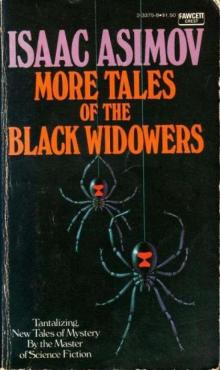 More Tales of the Black Widowers
More Tales of the Black Widowers The Complete Stories
The Complete Stories Robot Visions
Robot Visions Lucky Starr And The Moons of Jupiter
Lucky Starr And The Moons of Jupiter Lucky Starr and the Big Sun of Mercury
Lucky Starr and the Big Sun of Mercury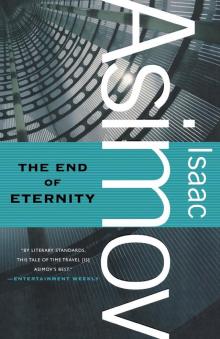 The End of Eternity
The End of Eternity The Bicentennial Man and Other Stories
The Bicentennial Man and Other Stories Lucky Starr And The Rings Of Saturn
Lucky Starr And The Rings Of Saturn Buy Jupiter and Other Stories
Buy Jupiter and Other Stories Forward the Foundation
Forward the Foundation Lucky Starr and the Oceans of Venus
Lucky Starr and the Oceans of Venus The Positronic Man
The Positronic Man The Portable Star
The Portable Star Asimovs Mysteries
Asimovs Mysteries Earth Is Room Enough
Earth Is Room Enough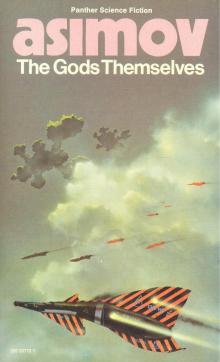 The Gods Themselves
The Gods Themselves Youth
Youth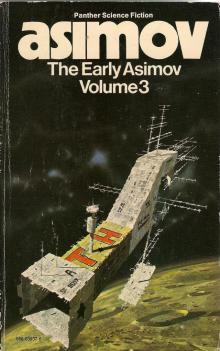 The Early Asimov Volume 3
The Early Asimov Volume 3 The Winds of Change and Other Stories
The Winds of Change and Other Stories Of Time, Space, and Other Things
Of Time, Space, and Other Things Nine Tomorrows
Nine Tomorrows Time Warps
Time Warps Robots and Empire
Robots and Empire Young Star Travelers
Young Star Travelers Fantastic Voyage II: Destination Brain
Fantastic Voyage II: Destination Brain Second Foundation
Second Foundation The Rest of the Robots
The Rest of the Robots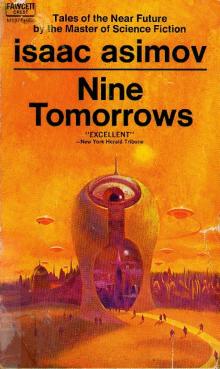 NINE TOMORROWS Tales of the Near Future
NINE TOMORROWS Tales of the Near Future Daneel Olivaw 1 - The Caves of Steel
Daneel Olivaw 1 - The Caves of Steel THE BICENTENNIAL MAN
THE BICENTENNIAL MAN David Starr Space Ranger (lucky starr)
David Starr Space Ranger (lucky starr)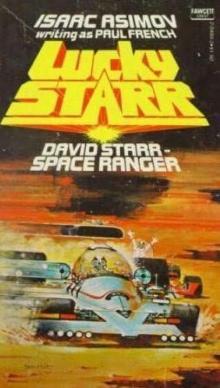 David Starr Space Ranger (ls)
David Starr Space Ranger (ls) Lucky Starr And The Big Sun Of Mercury ls-4
Lucky Starr And The Big Sun Of Mercury ls-4 Pebble In The Sky te-1
Pebble In The Sky te-1 Asimov’s Future History Volume 9
Asimov’s Future History Volume 9 Gold: The Final Science Fiction Collection
Gold: The Final Science Fiction Collection Foundation and Earth f-7
Foundation and Earth f-7 Asimov's New Guide to Science
Asimov's New Guide to Science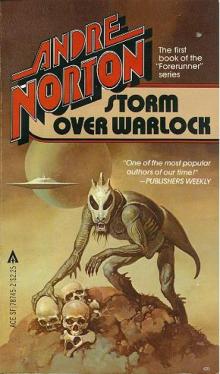 STORM OVER WARLOCK
STORM OVER WARLOCK Stars, Like Dust
Stars, Like Dust Norby The Mixed-Up Robot
Norby The Mixed-Up Robot Found!
Found! Asimov’s Future History Volume 11
Asimov’s Future History Volume 11 Second Foundation f-5
Second Foundation f-5 Asimov’s Future History Volume 15
Asimov’s Future History Volume 15 The Early Asimov. Volume 1
The Early Asimov. Volume 1 Secound Foundation
Secound Foundation Daneel Olivaw 3 - The Robots of Dawn
Daneel Olivaw 3 - The Robots of Dawn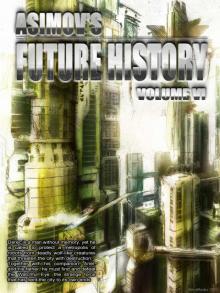 Asimov’s Future History Volume 6
Asimov’s Future History Volume 6 The Early Asimov. Volume 2
The Early Asimov. Volume 2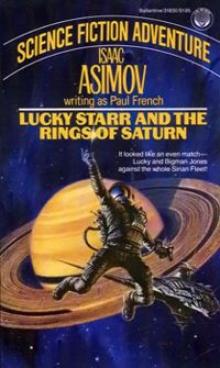 Lucky Starr And The Rings Of Saturn ls-6
Lucky Starr And The Rings Of Saturn ls-6 100 Malicious Little Mysteries
100 Malicious Little Mysteries Forward the Foundation f-2
Forward the Foundation f-2 I.Asimov: A Memoir
I.Asimov: A Memoir Foundation's Edge f-6
Foundation's Edge f-6 Lucky Starr and the Pirates of the Asteroids ls-2
Lucky Starr and the Pirates of the Asteroids ls-2 Robot City 1 & 2
Robot City 1 & 2 The Fourth Science Fiction Megapack
The Fourth Science Fiction Megapack Asimov’s Future History Volume 16
Asimov’s Future History Volume 16 The Dim Rumble
The Dim Rumble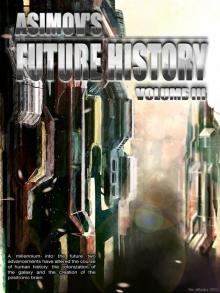 Asimov's Future History Volume 3
Asimov's Future History Volume 3 The Currents Of Space te-3
The Currents Of Space te-3 Asimov’s Guide To Shakespear. Volume 1
Asimov’s Guide To Shakespear. Volume 1 Asimov’s Future History Volume 13
Asimov’s Future History Volume 13 Asimov’s Future History Volume 12
Asimov’s Future History Volume 12 The Secret Sense
The Secret Sense Of Time and Space and Other Things
Of Time and Space and Other Things Norby tnc-2
Norby tnc-2 Norby The Mixed-Up Robot tnc-1
Norby The Mixed-Up Robot tnc-1 Misbegotten Missionary
Misbegotten Missionary Asimov’s Future History Volume 19
Asimov’s Future History Volume 19 Fantastic Voyage II: Destination Brain fv-2
Fantastic Voyage II: Destination Brain fv-2 Asimov’s Future History Volume 10
Asimov’s Future History Volume 10 Asimov's Future History Volume 2
Asimov's Future History Volume 2 Feeling of Power
Feeling of Power In the Beginning
In the Beginning The Caves of Steel trs-1
The Caves of Steel trs-1 Asimov's Future History Vol 2
Asimov's Future History Vol 2 Caliban c-1
Caliban c-1 The Gentle Vultures
The Gentle Vultures Utopia c-3
Utopia c-3 Prelude to Foundation f-1
Prelude to Foundation f-1 Short Stories Vol.1
Short Stories Vol.1 Asimov’s Future History Volume 8
Asimov’s Future History Volume 8 Daneel Olivaw 4 - Robots and Empire
Daneel Olivaw 4 - Robots and Empire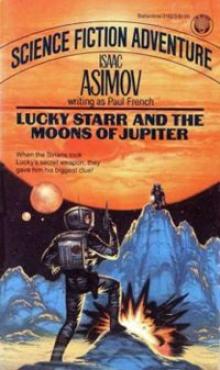 Lucky Starr The And The Moons of Jupiter ls-5
Lucky Starr The And The Moons of Jupiter ls-5 Gold
Gold Asimov’s Future History Volume 4
Asimov’s Future History Volume 4 Foundation and Empire f-4
Foundation and Empire f-4 Potential
Potential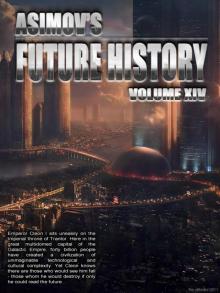 Asimov’s Future History Volume 14
Asimov’s Future History Volume 14 Asimov’s Future History Volume 7
Asimov’s Future History Volume 7 Daneel Olivaw 2 - The Naked Sun
Daneel Olivaw 2 - The Naked Sun Lucky Starr and the Pirates of the Asteroids
Lucky Starr and the Pirates of the Asteroids Foundation f-3
Foundation f-3 All the Troubles of the World
All the Troubles of the World Cleon the Emperor
Cleon the Emperor Asimov's Future History Volume 5
Asimov's Future History Volume 5 Asimov’s Future History Volume 20
Asimov’s Future History Volume 20 Robots and Empire trs-4
Robots and Empire trs-4 Profession
Profession It's Been a Good Life
It's Been a Good Life The Robots of Dawn trs-3
The Robots of Dawn trs-3 Lucky Starr And The Oceanf Of Venus ls-3
Lucky Starr And The Oceanf Of Venus ls-3 The Naked Sun trs-2
The Naked Sun trs-2 Asimov's Future History Volume 1
Asimov's Future History Volume 1